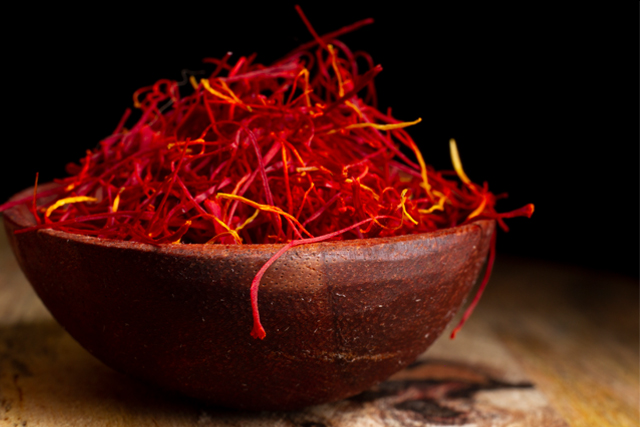Saffron, often referred to as “red gold,” boasts a rich and storied history as a highly coveted spice, deeply intertwined with global trade and cultural exchanges.
Ancient Beginnings
The cultivation of saffron dates back over 4,000 years, with its origins believed to be in Mesopotamia, Ancient Greece, Persia and Rome. Historical records indicate that the Assyrians and Egyptians utilized saffron as early as the 7th century BC. Its vibrant color and distinct aroma made it a prized commodity, not only for culinary uses but also for medicinal and ceremonial purposes.
Silk Road and Mediterranean Trade
Saffron’s journey from the East to the West was facilitated by the Silk Road, the ancient network of trade routes connecting the East and West. Alongside silk, jewels, and exotic fruits, saffron traveled from distant lands to end up in markets and palaces across the globe.
In the Mediterranean, saffron became a symbol of wealth and luxury. Venice, for instance, emerged as a significant trading hub for saffron entering Europe. The city’s strategic location and economic prowess underscored saffron’s critical role in shaping economic landscapes across different eras.
Medieval and Renaissance Europe
During the Middle Ages, saffron was highly valued in Europe, where it was used to flavor and color foods, as well as in medicines and dyes. Its scarcity and high cost made it a luxury item, often associated with the elite. The spice’s allure was so strong that counterfeit saffron began to emerge, highlighting its esteemed status in society.
Global Expansion and Distribution
The Age of Exploration in the 15th and 16th centuries saw European powers establishing trade routes that further disseminated saffron cultivation. The spice found its way to the Americas, where it was cultivated in regions like Pennsylvania by the early 18th century. High demand in the Caribbean spiked the value of saffron to equal that of gold until the War of 1812, when many merchant vessels transporting saffron were destroyed.
Modern Trade and Production
Today, Iran and Spain remain the world’s largest producer of saffron. Other significant producers include Afghanistan, India (particularly the Kashmir region), Greece, and Morocco. The labor-intensive process of harvesting saffron—requiring thousands of flowers to produce a single pound of spice—contributes to its high market value.
The global saffron market is projected to grow significantly, driven by its applications in the food industry, pharmaceuticals, and cosmetics. However, challenges such as climate change, geopolitical tensions, and economic sanctions can impact production and trade dynamics.
